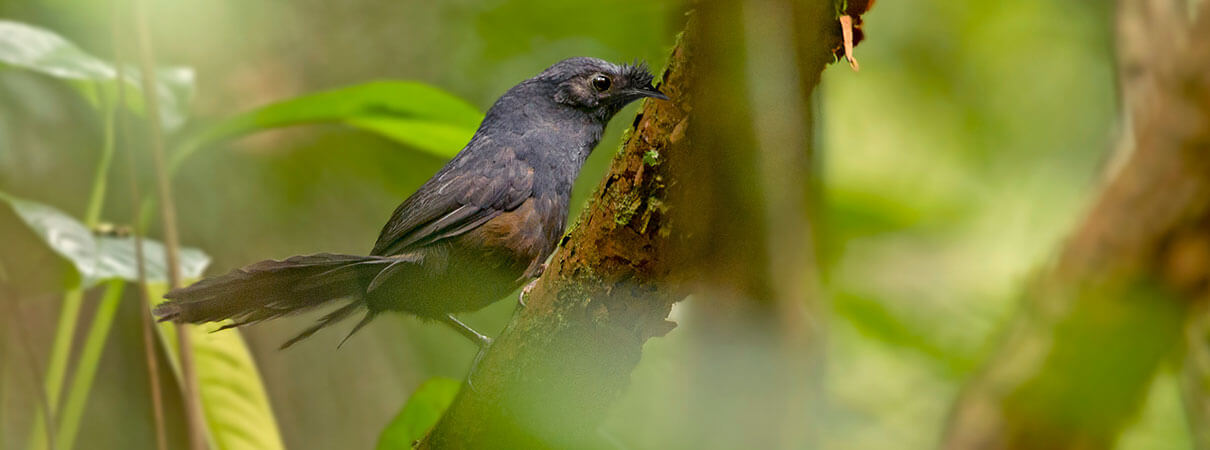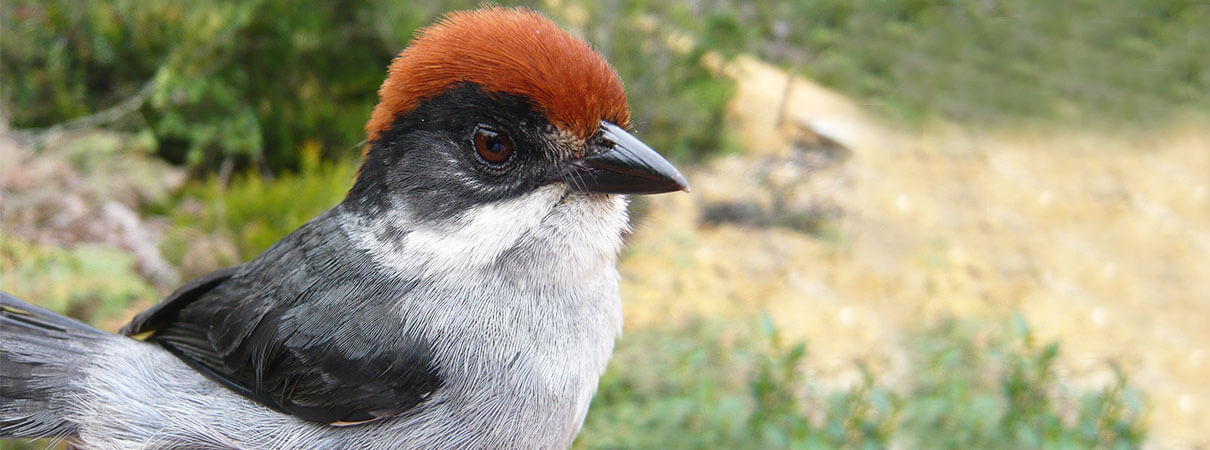Rare Birds: These Four Birds May be the Rarest in the Americas
Over the last 500 years, as many as 183 bird species have gone extinct. Given that the more famous of these — the Passenger Pigeon and Ivory-billed Woodpecker — are immortalized in grainy black-and-white photos, you might be forgiven for assuming that bird extinction is a thing of the past. In truth, however, this danger is far from gone.
In only the last 10 years, eight birds have likely gone extinct. And, unlike past extinctions, which overwhelmingly affected island birds lacking the mobility to flee threats, recent disappearances have included more land-locked birds, particularly in South America.
All told, approximately one-eighth of all known birds — 1,469 species — are now threatened with extinction. Of these, 222 are declared Critically Endangered, in most dire need of conservation. In some cases, only a few dozen birds survive. In the worst, one or two remain.
Among the Critically Endangered species, we've identified four that rank as some of the rarest in the Western Hemisphere. Each of these birds survives in a single locality, represented by fewer than 20 remaining individuals. But we haven't given up on their recovery. As you'll read below, American Bird Conservancy (ABC) and our conservation partners are racing to save these species while time remains.

Stresemann's Bristlefront. Photo by Ciro Albano
Stresemann's Bristlefront
Estimated population: One known individual
IUCN Status: Critically Endangered
Location: Bahia State, Brazil
Overview: Perhaps the world's rarest bird, only one Stresemann's Bristlefront is known to survive in the wild. Unfortunately, this bird is confined to one of the most fragmented and degraded – and vulnerable – forests in the Americas.
Description: Stresemann's Bristlefront is a long-tailed, burrow-nesting songbird named for the bristly-looking tuft of feathers on its forehead. It belongs to the large family Rhinocryptidae, known as the tapaculos, native to Central and South America and notorious for their elusive habits and unresolved taxonomy.
Threats: Found only in Brazil's Atlantic Forest, Stresemann's Bristlefront has suffered from extreme habitat loss, as the forest it depends upon for survival has been swept away for agriculture.
Conservation: After a 50-year disappearance, Stresemann's Bristlefront was rediscovered in 1995. In 2007, ABC supported the creation of the Songbird Forest Reserve to protect its remaining habitat. However, following a severe drought and a series of fires in 2016, the bird once again disappeared. Efforts to re-locate the bird proved successful when a single female bristlefront was found in December of 2018.

Antioquia Brushfinch. Photo by Sergio Chaparro
Antioquia Brushfinch
Estimated population: Fewer than 20 individuals
IUCN Status: Critically Endangered
Location: Antioquia Department, Colombia
Overview: The Antioquia Brushfinch was described as a new species in 2007, based on museum specimens collected decades earlier. Attempts to find the bird failed and it was feared extinct until 2018, when it was spotted for the first time in 47 years in a small town outside of MedellÍn. Unfortunately, fewer than 20 individuals have been found, and immediate conservation efforts are needed.
Description: The Antioquia Brushfinch is known only from a single locality in Colombia's Central Andes. Due to its recent rediscovery, little is yet known about this songbird. Field studies are needed to better understand the brushfinch's behavior and habitat requirements, and find more sites for this species.
Threats: Within the municipality of San Pedro de los Milagros, where the Antioquia Brushfinch is found, 73 percent of the land has been converted to pasture. Making matters worse, the remaining habitat is under severe threat of conversion for pasture and cropland. It is unknown if nest parasitism by Shiny Cowbirds may also contribute to declines, as has happened with other brushfinch species.
Conservation: As part of a larger effort to rediscover and conserve “lost” birds, ABC is supporting searches to find more populations of the Antioquia Brushfinch. Next steps include working with local partners to protect and restore remaining habitat.

Blue-eyed Ground-Dove. Photo by Ciro Albano
Blue-eyed Ground-Dove
Estimated population: ~19 individuals
IUCN Status: Critically Endangered
Location: Minas Gerais state, Brazil
Summary: The Blue-eyed Ground-Dove was considered extinct until 2015, when it was sighted for the first time in 75 years — setting off a race to save the species. Two years later, ABC's local partner SAVE Brasil created a reserve protecting important habitat for the dove, and the following year a state park was created, ensuring that all known individuals were contained within a protected area. In coming years, increased support from conservation groups and concerned birders will be critical to help this species recover.
Description: Already one of the world's rarest birds, the Blue-eyed Ground-Dove becomes even harder to find outside of the breeding season. During these times, it eludes detection, slipping out of sight when approached. This small dove is named for its vivid blue eyes, which match the spots on its wings and contrast with the rest of its rich tawny and rufous plumage.
Threats: Found only in Brazil's cerrado, or tropical savannah, the Blue-eyed Ground-Dove has lost much of its habitat to industrialized agriculture.
Conservation: Since the dove's rediscovery, ABC and its partner SAVE Brasil have been working to find and protect remaining individuals. Through its International Program, ABC is supporting SAVE Brasil's development of a Species Action Plan, which will bring together leading experts in an effort to address threats and save remaining Blue-eyed Ground-Doves.

Bahama Nuthatch. Photo by Tom Benson
Bahama Nuthatch
Estimated population: Two to five individuals
ICUN Status: Critically Endangered
Location: Grand Bahama Island, The Bahamas
Summary: After declining for decades, the total population of the Bahama Nuthatch was estimated to be 1,800 in 2004. In just three years, subsequent hurricanes destroyed remaining habitat, reducing the number to 23. When Hurricane Matthew struck the island of Grand Bahama in 2016, the nuthatch disappeared, and some feared it was extinct. In 2018, researchers rediscovered the bird. Surveys this year, however, failed to find any birds. ABC is working with a local partner to support ongoing search efforts.
Threats: The Bahama Nuthatch faces various suspected threats, including habitat destruction and degradation, invasive predatory species, fire, and hurricane damage.
Description: The Bahama Nuthatch is closely related to the Brown-headed Nuthatch of the southeastern United States, but can be distinguished by its longer beak, shorter wings, whiter belly, and vocalizations. The bird is only known from native pine forest on Grand Bahama Island, which lies approximately 100 miles off Palm Beach, Fla.
Conservation: ABC supported one of the two search teams that found the Bahama Nuthatch in 2018. Since then, we have joined forces with the Bahama National Trust to hire an avian ecologist on Grand Bahama, who will support bird conservation on the island, including part-time efforts to protect the Bahama Nuthatch.
Hope for the Future
Despite appearances, the situation for these birds isn't hopeless. Timely, well-planned recovery efforts can work, and ABC has successfully helped pull several of the rarest bird species from the brink. In total, 25 Critically Endangered bird species have begun to bounce back over the last 18 years thanks to the support of numerous conservation organizations.
We're working with local partners to make sure that the birds listed here also make successful comebacks. But we need to act rapidly if we want to save them. You can support ABC's efforts to save the rarest birds, and all of our conservation efforts throughout the Western Hemisphere.


















































